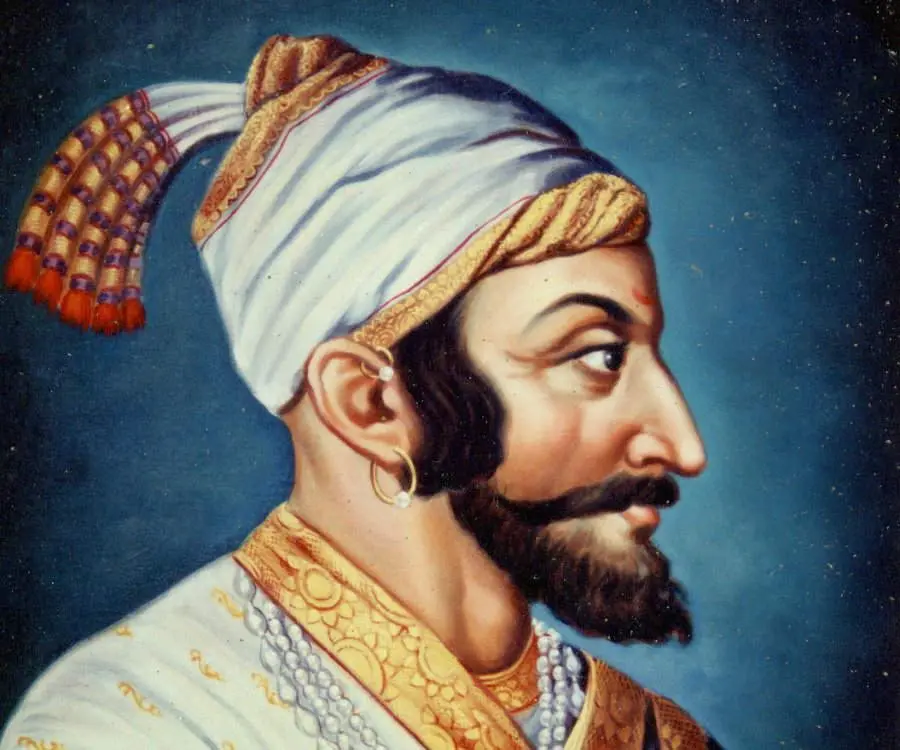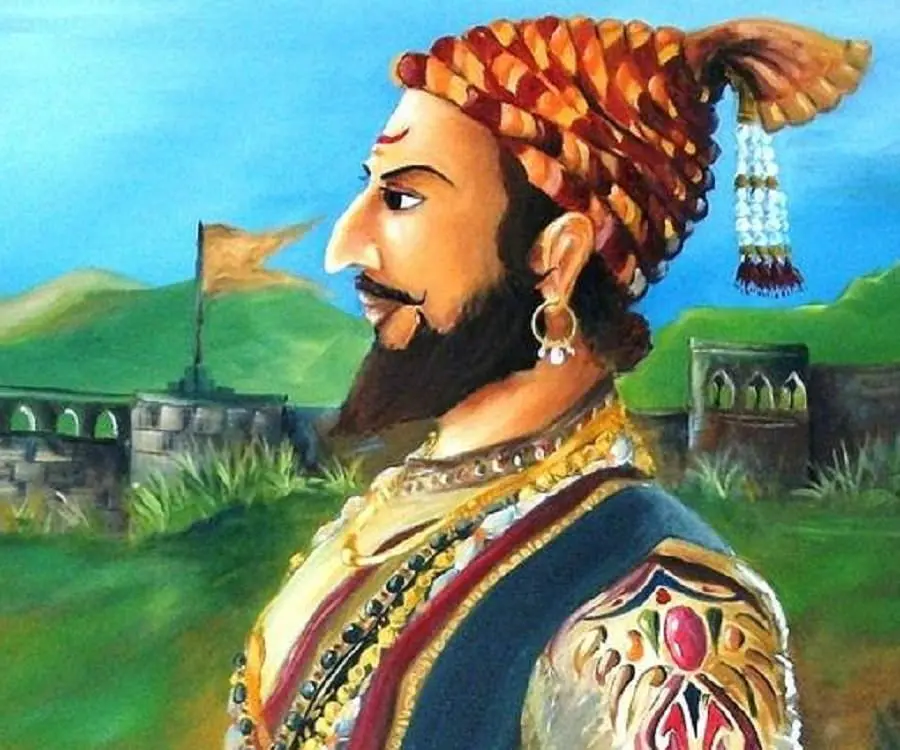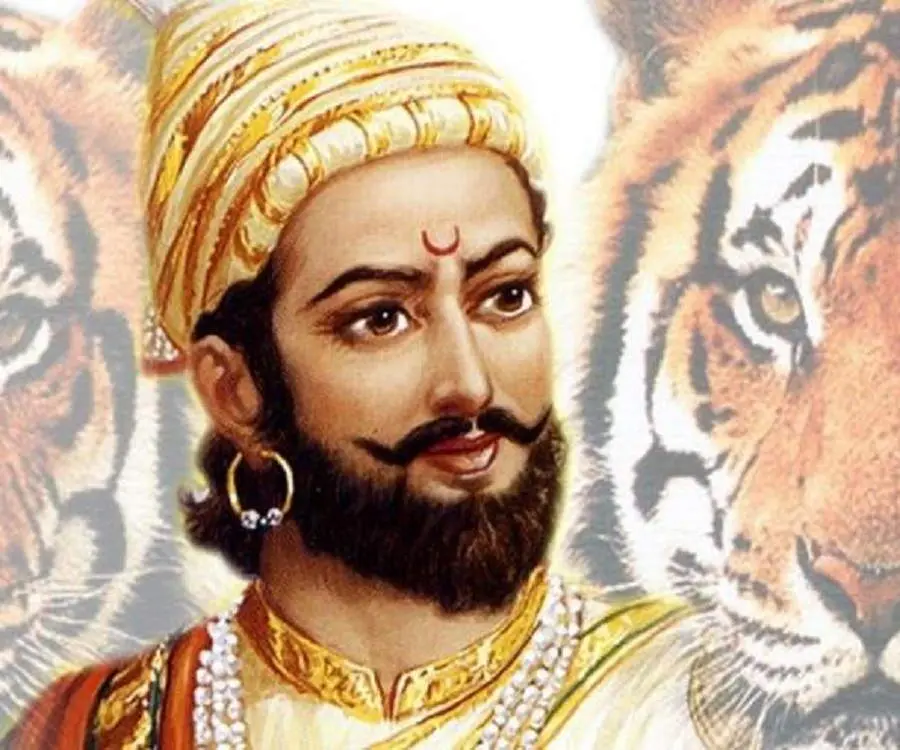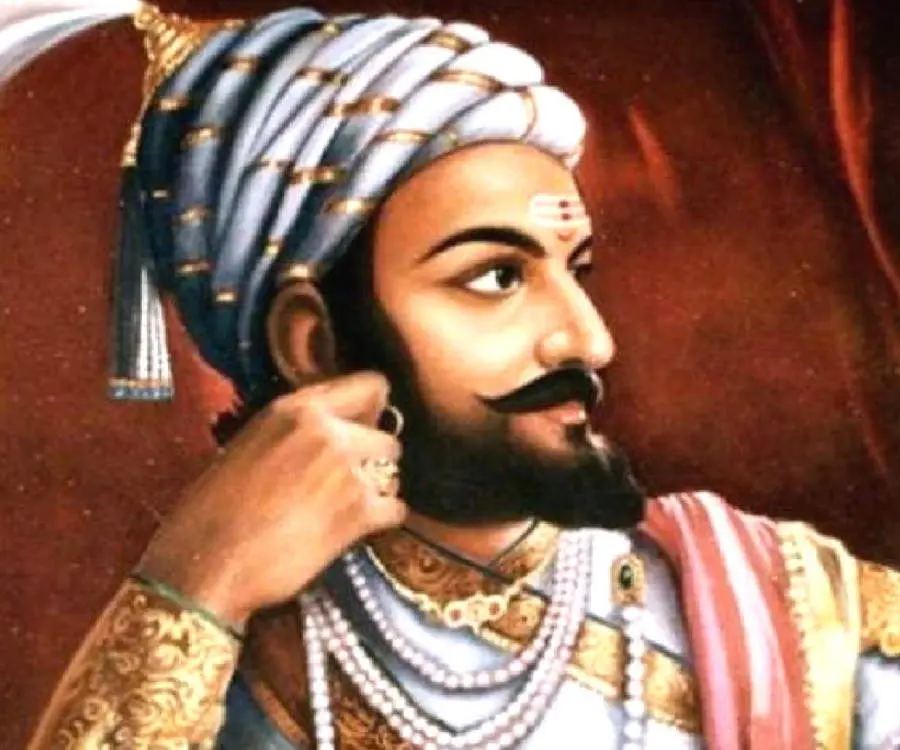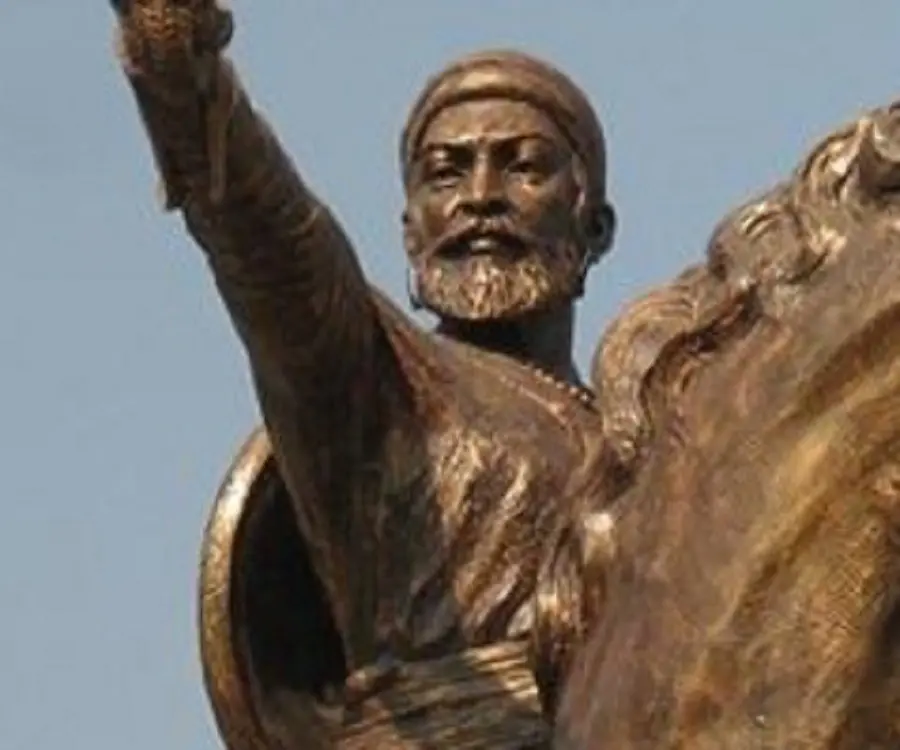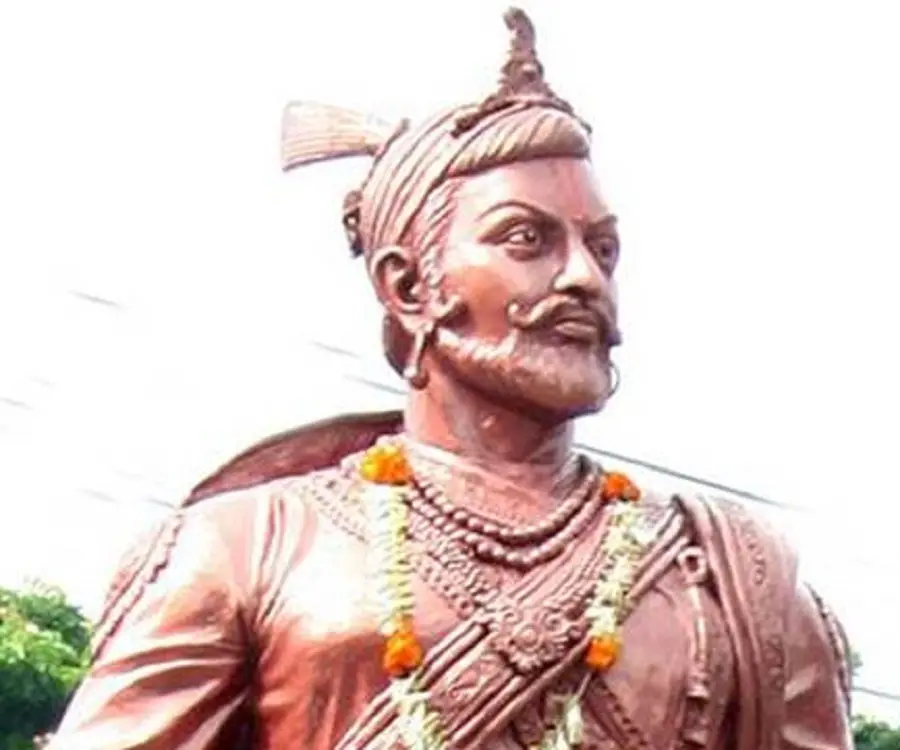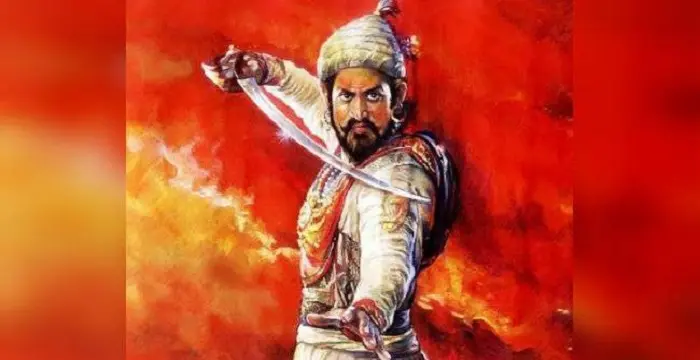
Shivaji - Kings, Life Achievements and Family
Shivaji's Personal Details
Shivaji was a great Indian warrior, who established the Maratha kingdom in western India
| Information | Detail |
|---|---|
| Birthday | February 19, 1627 |
| Died on | April 3, 1680 |
| Nationality | Indian |
| Famous | Historical Personalities, Emperors & Kings, Emperors, Kings |
| Spouses | Gunvantibai, Kashibai, Laxmibai, Putalabai, Sagunabai, Sai Bhosale, Sakvarbai, Soyarabai |
| Siblings | Ekoji I, Sambhaji Shahaji Bhosale |
| Known as | Shivaji Maharaj |
| Childrens | Ambikabai Mahadik, Deepabai, Kamlabai Palkar, Rajaram Chhatrapati, Rajkunvarbai Shirke, Ranubai Jadhav, Sakhubai Nimbalkar, Sambhaji Bhosale |
| Birth Place | Shivneri |
| Religion | Hinduism |
| Gender | Male |
| Father | Shahaji |
| Mother | Jijabai |
| Sun Sign | Aquarius |
| Born in | Shivneri |
| Famous as | King |
| Died at Age | 53 |
// Famous Kings
Sundiata Keita
Sundiata Keita was the founder of the Mali Empire in West Africa. This biography profiles his childhood, early life, struggles, founding of empire, rule, administration, achievements and also gives some fun facts.
Ashoka
Ashoka was the third emperor of the Mauryan Dynasty and ruled almost the entire Indian subcontinent. This biography profiles his childhood, life, reign, achievements and timeline
Murad IV
Murad IV was one of the mighty Sultans in the history of the Ottoman Empire. This biography profiles his childhood, family, accession, rule, administration and timeline.
Shivaji's photo
Who is Shivaji?
Shivaji was a legendary Maratha king, who established the Maratha kingdom in western India. Brought up under the able guidance of his mother and his father’s administrator, Dadoji Konddeo, he became a brave and powerful warrior, with military training in various fighting techniques. He plunged into conquests of forts and territories at the young age of 16, carrying out a number of successful expeditions. However, his combat with Bijapur Sultan’s general, Afzal Khan, at the Battle of Pratapgarh was his major blowout, following which he defeated the bigger forces of Bijapur at the Battle of Kolhapur, thereby establishing the Maratha dominance in the western region. His conflicts with the Mughal Empire resulted in the seizure of Pune, though he was later suppressed by the Mughal army, forcing him to sign the Treaty of Purandar and surrender a large number of his fortresses, followed by his arrest upon being invited at Agra. However, he escaped and avenged his defeat by recapturing the capitulated forts. Besides the Deccan, he also brought a number of provinces in South India under his reign. He crowned himself as the king of the Maratha kingdom and took upon the title Kshatriya Kulavantas Simhasanadheeshwar Chhatrapati Shivaji Maharaj
// Famous Emperors
Sundiata Keita
Sundiata Keita was the founder of the Mali Empire in West Africa. This biography profiles his childhood, early life, struggles, founding of empire, rule, administration, achievements and also gives some fun facts.
Ashoka
Ashoka was the third emperor of the Mauryan Dynasty and ruled almost the entire Indian subcontinent. This biography profiles his childhood, life, reign, achievements and timeline
Murad IV
Murad IV was one of the mighty Sultans in the history of the Ottoman Empire. This biography profiles his childhood, family, accession, rule, administration and timeline.
Childhood & Early Life
Shivaji Bhonsale was born in 1627 (or 1630) at Shivneri, a hill fort near Junnar, Pune, into a family of Maratha bureaucrats, to Shahji Bhonsale, a Maratha general in the army of the Bijapur Sultanate, and Jijabai.
His mother’s extremely religious nature made a great impact on his upbringing as he grew up studying Ramayana and Mahabharata and showed great interest in religious teachings, especially those of Hindu and Sufi saints.
He was brought up by his mother and his administrator, Dadoji Konddeo, who taught him horse riding, archery, marksmanship, patta and other fighting techniques after his father left for Karnataka with his second wife, Tukabai.
Accession & Reign
He made his first military conquest at the age of 16 in 1645 by attacking and capturing Torna Fort in the Bijapur Sultanate, followed by conquest of other forts – Chakan, Kondana, and Rajgad.
Fearing his rising power, the Bijapur Sutlan, Mohammed Adil Shah imprisoned his father, following which he halted his conquests and built a stronger army until his father’s release in 1653 or 1655.
The Bijapur Sultan sent his general, Afzal Khan, to supress Shivaji in November 1659, who, fearing Afzal’s deceitful plans, came armed with bagh nakh (tiger claw) in one hand and a dagger in the other, and slayed him at the Pratapgar Fort.
He was attacked by the army of Adilshah’s general, Siddi Jauhar, while camping at Panhala Fort, near present-day Kolhapur, in 1660, but Shivaji escape to Vishalgad fort to regroup his large army for a battle. Backed by his Maratha sardar Baji Prabhu Deshpande, who wounded himself while holding back the army at the Battle of Pavan Khind, he reached Vishalgad safely, resulting in a truce between him and Adilshah in July 1660.
He resumed his raids after his father’s death in 1664-65 and seized the northern parts of Konkon and forts of Purandar and Javali.
His peaceful relations with the Mughals saw conflicts in 1657 when he raided the Mughal territories in Ahmednagar and Junnar, following which Aurangzeb sent a 150,000-force under Shaista Khan, in 1660, to chastise him.
The Mughal army captured Pune. When they encamped there, Shivaji made a surprise attack killing Mughal soldiers and guards, with Shaista Khan narrowly escaping. Soon after in 1664, he raided Surat and looted its treasure.
He made a visit to Agra, along with his nine-year old son Sambhaji, upon Aurangzeb’s invitation in 1666, who planned to send him to Kandahar (now in Afghanistan) to handle the Mughal empire’s northwestern frontier.
He was ill-treated by Aurangzeb at his court and offended. He was taken into custody and put under house arrest. However, he managed to escape with his son and spent the next three years strengthening his administration.
With the end of the Treaty of Purandar in 1670, he attacked the Mughal forces in Maharashtra and re-captured the forts he had surrendered to them.
In 1670, he launched an expedition under Tanaji Malusare to capture Kondana For, which was under Mughal possession, in the Battle of Sinhagad. While the fort was seized, Malusare died and hence, the fort was renamed Sinhagad.
He raided Surat for a second time in 1670 and defeated the Mughal army under Daud Khan in the Battle of Vani-Dindori (close to present-day Nasik) while returning back.
After spending the early 1670s in capturing land and expanding his domain, he crowned himself as the king of the Marathas at Raigad in 1674, earning the title Kshatriya Kulavantas Sinhasanadheeshwar Chhatrapati Shivaji Maharaj.
He went on an extensive campaign of raiding more territories in the later half of 1674, capturing Khandesh, followed by Bijapuri Ponda, Karwar, Kolhapur and Janjira in 1675, and Ramnagar, Athani, Belgaum and Vayem Rayim in 1676.
He moved southwards at the end of 1676, seizing the forts at Vellore and Gingee (in present-day Tamil Nadu), once ruled by the Adilshahi Dynasty.
Despite being a devoted Hindu, he showed great respect to all religions, including Islam and Christianity, and was unbiased towards other castes and communities.
Major Battles
His army attacked the Bijapur Sultanate’s forces at the Battle of Pratapgarh killing over 3,000 soldiers and imprisoning two sons of Afzal Khan, besides seizing weapons, war-materials, horses and armor to further strengthen his army.
To curb down the emerging power of Shivaji, the Bijapur Sultan sent an army of 10,000 forces under Rustam Zaman in December 1659 but was defeated at the hands of the Maratha army at the Battle of Kolhapur.
Aurangzeb sent Rajput Raja Jai Singh to suppress Shivaji and succeeded in capturing various Maratha forts, thereby forcing him to surrender and sign the Treaty of Purandar in 1665, ceding 23 forts and 400,000 rupees to the Mughals.
Achievements
He built a strong and powerful army, comprising of infantry and cavalry, getting them adapted to the techniques of swift flanking attacks, hill campaigns and commando actions, apart from pioneering in the guerrilla warfare method.
He organized a commanding and disciplined navy, including 200 warships, to keep the coastline of his empire secured from the Portuguese, British, Dutch, Siddis and Mughals, thereby earning the title ‘Father of Indian Navy’.
Personal Life & Legacy
In 1640, he got married to Saibai, from the renowned Nimbalkar family, with whom he had four children – daughter Sakhubai (1651), daughter Ranubai (1653), daughter Ambikabai (1655) and son Sambhaji (1657).
His second marriage to Soyarabai was forcefully arranged by his stepmother, Tukabai, despite Jijabai’s consistent refusal. The couple had two children – daughter Balibai and son Rajaram.
He had several other wives, including Putalabai, Sakvarbai and Kashibai.
He died in April 1680 at Raigad Fort, after suffering from fever and dysentery for three weeks.
Though Soyarabai initially succeeded in crowning her son, Rajaram, as the next king, but Sambhaji captured Raigad Fort and ascended the throne in July 1680. Thereafter, he imprisoned Rajaram and Soyarabai and executed the latter.
// Famous Emperors & Kings
Sundiata Keita
Sundiata Keita was the founder of the Mali Empire in West Africa. This biography profiles his childhood, early life, struggles, founding of empire, rule, administration, achievements and also gives some fun facts.
Ashoka
Ashoka was the third emperor of the Mauryan Dynasty and ruled almost the entire Indian subcontinent. This biography profiles his childhood, life, reign, achievements and timeline
Murad IV
Murad IV was one of the mighty Sultans in the history of the Ottoman Empire. This biography profiles his childhood, family, accession, rule, administration and timeline.
Shivaji biography timelines
- // 1627Shivaji Bhonsale was born in 1627 (or 1630) at Shivneri, a hill fort near Junnar, Pune, into a family of Maratha bureaucrats, to Shahji Bhonsale, a Maratha general in the army of the Bijapur Sultanate, and Jijabai.
- // 1640In 1640, he got married to Saibai, from the renowned Nimbalkar family, with whom he had four children – daughter Sakhubai (1651), daughter Ranubai (1653), daughter Ambikabai (1655) and son Sambhaji (1657).
- // 1645He made his first military conquest at the age of 16 in 1645 by attacking and capturing Torna Fort in the Bijapur Sultanate, followed by conquest of other forts – Chakan, Kondana, and Rajgad.
- // 1653 To 1655Fearing his rising power, the Bijapur Sutlan, Mohammed Adil Shah imprisoned his father, following which he halted his conquests and built a stronger army until his father’s release in 1653 or 1655.
- // 1657 To 1660His peaceful relations with the Mughals saw conflicts in 1657 when he raided the Mughal territories in Ahmednagar and Junnar, following which Aurangzeb sent a 150,000-force under Shaista Khan, in 1660, to chastise him.
- // Nov 1659The Bijapur Sultan sent his general, Afzal Khan, to supress Shivaji in November 1659, who, fearing Afzal’s deceitful plans, came armed with bagh nakh (tiger claw) in one hand and a dagger in the other, and slayed him at the Pratapgar Fort.
- // Dec 1659To curb down the emerging power of Shivaji, the Bijapur Sultan sent an army of 10,000 forces under Rustam Zaman in December 1659 but was defeated at the hands of the Maratha army at the Battle of Kolhapur.
- // Jul 1660He was attacked by the army of Adilshah’s general, Siddi Jauhar, while camping at Panhala Fort, near present-day Kolhapur, in 1660, but Shivaji escape to Vishalgad fort to regroup his large army for a battle. Backed by his Maratha sardar Baji Prabhu Deshpande, who wounded himself while holding back the army at the Battle of Pavan Khind, he reached Vishalgad safely, resulting in a truce between him and Adilshah in July 1660.
- // 1664He resumed his raids after his father’s death in 1664-65 and seized the northern parts of Konkon and forts of Purandar and Javali.
- // 1664The Mughal army captured Pune. When they encamped there, Shivaji made a surprise attack killing Mughal soldiers and guards, with Shaista Khan narrowly escaping. Soon after in 1664, he raided Surat and looted its treasure.
- // 1665Aurangzeb sent Rajput Raja Jai Singh to suppress Shivaji and succeeded in capturing various Maratha forts, thereby forcing him to surrender and sign the Treaty of Purandar in 1665, ceding 23 forts and 400,000 rupees to the Mughals.
- // 1666He made a visit to Agra, along with his nine-year old son Sambhaji, upon Aurangzeb’s invitation in 1666, who planned to send him to Kandahar (now in Afghanistan) to handle the Mughal empire’s northwestern frontier.
- // 1670With the end of the Treaty of Purandar in 1670, he attacked the Mughal forces in Maharashtra and re-captured the forts he had surrendered to them.
- // 1670In 1670, he launched an expedition under Tanaji Malusare to capture Kondana For, which was under Mughal possession, in the Battle of Sinhagad. While the fort was seized, Malusare died and hence, the fort was renamed Sinhagad.
- // 1670He raided Surat for a second time in 1670 and defeated the Mughal army under Daud Khan in the Battle of Vani-Dindori (close to present-day Nasik) while returning back.
- // 1674After spending the early 1670s in capturing land and expanding his domain, he crowned himself as the king of the Marathas at Raigad in 1674, earning the title Kshatriya Kulavantas Sinhasanadheeshwar Chhatrapati Shivaji Maharaj.
- // 1674 To 1676He went on an extensive campaign of raiding more territories in the later half of 1674, capturing Khandesh, followed by Bijapuri Ponda, Karwar, Kolhapur and Janjira in 1675, and Ramnagar, Athani, Belgaum and Vayem Rayim in 1676.
- // 1676He moved southwards at the end of 1676, seizing the forts at Vellore and Gingee (in present-day Tamil Nadu), once ruled by the Adilshahi Dynasty.
- // Apr 1680He died in April 1680 at Raigad Fort, after suffering from fever and dysentery for three weeks.
- // Jul 1680Though Soyarabai initially succeeded in crowning her son, Rajaram, as the next king, but Sambhaji captured Raigad Fort and ascended the throne in July 1680. Thereafter, he imprisoned Rajaram and Soyarabai and executed the latter.
// Famous Historical Personalities
Sundiata Keita
Sundiata Keita was the founder of the Mali Empire in West Africa. This biography profiles his childhood, early life, struggles, founding of empire, rule, administration, achievements and also gives some fun facts.
Ashoka
Ashoka was the third emperor of the Mauryan Dynasty and ruled almost the entire Indian subcontinent. This biography profiles his childhood, life, reign, achievements and timeline
Jetsun Pema
Jetsun Pema is the Queen consort of Bhutan. Check out this biography to know about her childhood, family life, achievements and fun facts about her life.
Murad IV
Murad IV was one of the mighty Sultans in the history of the Ottoman Empire. This biography profiles his childhood, family, accession, rule, administration and timeline.
Xerxes I
Xerxes I (Xerxes the Great) was the fourth and the most famous king of the Archaemenid dynasty of Persia. This biography profiles his childhood, family, personal life, life history, achievements, campaigns, administration, death and other facts.
Sargon of Akkad
Sargon of Akkad, also called ‘Sargon the Great’, ‘Sarru-Kan’ and ‘Shar-Gani-Sharri’, was the founder and first king of the Akkadian Empire. This biography profiles his childhood, life, rule, administration, timeline, and gives some fun facts.
Shivaji's FAQ
What is Shivaji birthday?
Shivaji was born at 1627-02-19
When was Shivaji died?
Shivaji was died at 1680-04-03
Where was Shivaji died?
Shivaji was died in Raigad Fort
Which age was Shivaji died?
Shivaji was died at age 53
Where is Shivaji's birth place?
Shivaji was born in Shivneri
What is Shivaji nationalities?
Shivaji's nationalities is Indian
Who is Shivaji spouses?
Shivaji's spouses is Gunvantibai, Kashibai, Laxmibai, Putalabai, Sagunabai, Sai Bhosale, Sakvarbai, Soyarabai
Who is Shivaji siblings?
Shivaji's siblings is Ekoji I, Sambhaji Shahaji Bhosale
Who is Shivaji childrens?
Shivaji's childrens is Ambikabai Mahadik, Deepabai, Kamlabai Palkar, Rajaram Chhatrapati, Rajkunvarbai Shirke, Ranubai Jadhav, Sakhubai Nimbalkar, Sambhaji Bhosale
What is Shivaji's religion?
Shivaji's religion is Hinduism
Who is Shivaji's father?
Shivaji's father is Shahaji
Who is Shivaji's mother?
Shivaji's mother is Jijabai
What is Shivaji's sun sign?
Shivaji is Aquarius
How famous is Shivaji?
Shivaji is famouse as King




